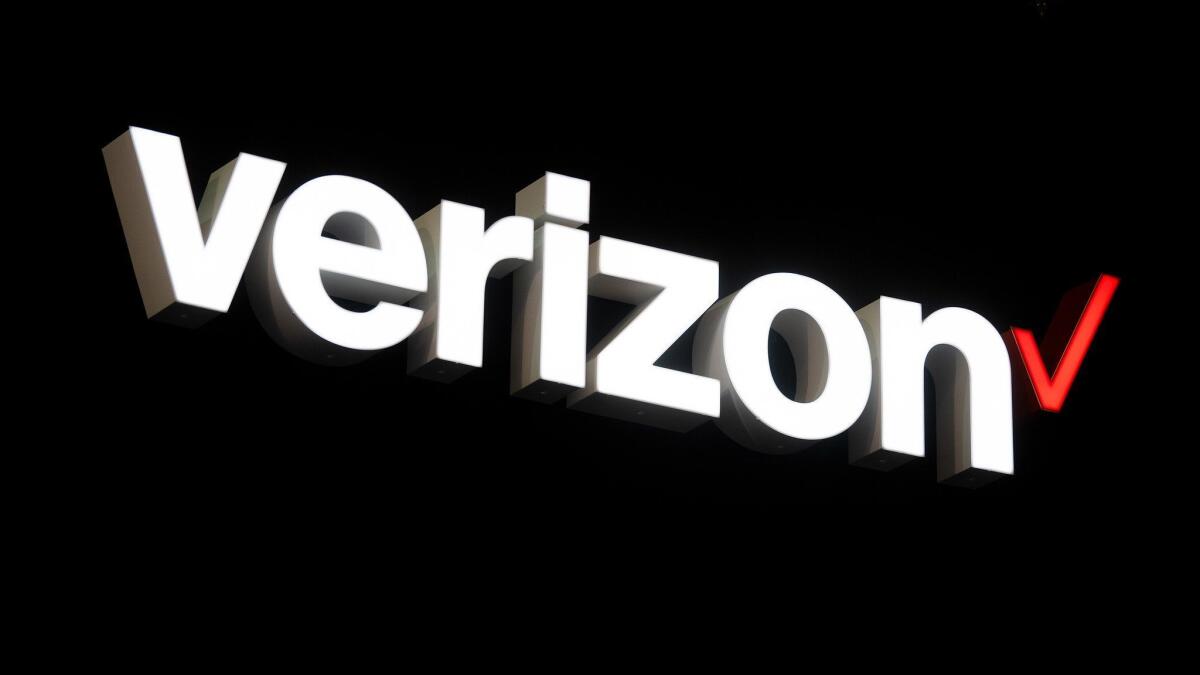Verizon turned on 5G wireless in two cities. Here’s what that means

- Share via
Verizon Communications Inc. said Wednesday it has turned on its ultra-fast 5G wireless network in parts of Chicago and Minneapolis, though it’ll be available only to certain subscribers who pay a fee and own a compatible smartphone.
The move makes Verizon the first wireless carrier in the United States to flip the switch on speedy, smartphone-ready 5G service in select urban areas, the company said. Other U.S. carriers, including AT&T Inc., Sprint Corp. and T-Mobile US Inc., have pledged to do the same in the coming months.
What is it?
The service Verizon is offering — 5G, the fifth generation of wireless data networks — could provide internet speeds that are as much as 100 times faster than 4G networks, according to an industry trade association. Through the placement of small boxes that serve as conduits for invisible, data-transmitting radio waves, 5G networks could feed a wide variety of consumer devices, such as smartphones and self-driving cars.
The promise of faster speeds and more reliable connections has generated a race between AT&T, Verizon, Sprint and T-Mobile, the country’s four largest carriers, to see who can offer service first (and capture new customers and their cash in the process). The U.S. government also has taken notice, with congressional lawmakers and the Trump administration looking to supercharge research, investment and development in the telecom sector, believing that better wireless networks give the country a more competitive business edge — particularly against China, which is racing to deploy 5G as well.
Who can get it?
Not everyone, at least not yet.
Only customers in select areas in Chicago and Minneapolis can use Verizon’s new 5G service. Even then, it requires specific hardware: Customers must have a particular phone — the Moto z3 — and a special 5G attachment for it, and then they must pay for unlimited data from Verizon as well as a $10 monthly fee.
The early limitations on Verizon’s 5G network reflect the nascent nature of the technology. Many popular smartphones, especially Apple Inc.’s most recent iPhone, aren’t equipped with the right chips to connect to those networks. Samsung Electronics Co. has yet to announce when a 5G version of its latest Galaxy smartphone will be available in the United States. And many experts don’t expect the first, real wave of 5G-capable smartphones to hit the market until 2020.
In the meantime, the carriers have deployed only limited 5G offerings. In December, AT&T said it had turned on 5G service in parts of 12 cities for only select customers and businesses that also bought a special mobile hot spot from the company. It’s also targeting 21 cities with mobile 5G this year. But the company later took heat, from its competitors as well as customers, for a decision to rebrand its existing wireless service as “5G E.”
This year, Sprint said it would test 5G wireless service in Atlanta, Chicago, Dallas and Kansas City in May, with other cities, including Los Angeles, slated before the end of June. Sprint at the time declined to share details about the plans it would offer consumers or exactly how much it would cost, though it does offer an LG phone that is able to take advantage of 5G speeds. Adding to the uncertainty, Sprint is seeking the federal government’s permission to buy T-Mobile, arguing that a combination of the two wireless giants would speed up 5G deployment.
In October, Verizon said customers in Los Angeles and three other cities could use 5G — but only as a form of home internet service.
More to Read
Inside the business of entertainment
The Wide Shot brings you news, analysis and insights on everything from streaming wars to production — and what it all means for the future.
You may occasionally receive promotional content from the Los Angeles Times.










